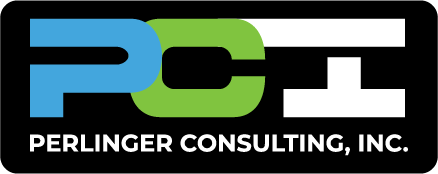Small Business Owner’s Financial Guide: What You Need to Know
Are you a small business owner struggling with managing your finances? Don’t worry, we’re here to help! In this guide, we’ll provide you with valuable insights and actionable tips to master small business finances and pave the path to success. Let’s dive in!
The Basics: Income and Expenses
Understanding the difference between revenue and profit is essential. Revenue represents the total income generated by your business, while profit is what remains after deducting expenses from revenue. By grasping this difference, you can assess your business’s financial health and make informed decisions.
Accurately tracking income and expenses is crucial.
Consider investing in reliable bookkeeping software or hire a professional bookkeeping service or QuickBooks consultant to efficiently track your finances. Categorizing expenses helps with better analysis and maximizing tax deductions.
Essential Financial Documents
Key financial documents include the profit and loss statement, balance sheet, cash-flow statement, tax returns, and aging reports. These documents offer insights into profitability, financial stability, cash flow, tax obligations, and overdue payments. Analyzing them helps identify areas for improvement, make informed decisions, and ensure compliance with tax regulations. Also be sure to keep a close wye on your bank and credit card reconciliations.
Managing Cash Flow
Proper cash flow management is crucial for small businesses. Set clear payment terms, incentivize early payments, negotiate extended vendor payment terms, and closely monitor outstanding invoices. Having a cash reserve for emergencies is also prudent.
To overcome cash flow challenges, focus on efficient inventory management, regular cash flow forecasting, timely collection of accounts receivable, and proactive expense management.
Budgeting and Forecasting
Creating an effective budget involves analyzing historical financial data and setting realistic revenue and expense targets. Regularly reviewing and revising your budget is important as your business evolves.
Forecasting helps with financial planning by estimating future financials based on historical data, industry trends, and market analysis. It enables you to assess the feasibility of business decisions, identify risks, and plan for growth proactively.
Financing Options for Small Businesses
Common financing options for small businesses include bank loans, Small Business Administration (SBA) loans, crowdfunding, and angel investors (high net-worth private investor). Assess your needs and research thoroughly to choose the best option for your business, considering factors like interest rates, repayment terms, eligibility criteria, required collateral, and processing time.
Tax Considerations for Small Businesses
As a small business owner, you have tax obligations such as income tax, employment tax, sales tax, and self-employment tax. Stay updated on tax regulations, maintain accurate records of business expenses, consult with a tax professional, and maximize deductions and credits to reduce your tax liability.
Financial Planning for Growth
Financing business expansion can be achieved through options like reinvesting profits, securing loans, seeking investment partners, or exploring government grants and programs. Strategic planning, financial forecasting, and regular evaluation of KPIs (Key Performance Indicator) are crucial for long-term success.
Now that you have the Small Business Owner’s Financial Guide as a snap shot to what you need to know; use the checklist below to keep you on track. (Copy/paste and check off your progress).
Understand the Basics:
☐ Differentiate between revenue and profit.
☐ Accurately track income and expenses.
☐ Categorize expenses for better analysis and tax deductions.
Essential Financial Documents:
☐ Regularly review and analyze financial statements.
☐ Identify areas for improvement
Cash Flow Management:
☐ Set clear payment terms.
☐ Negotiate extended vendor payment.
☐ Monitor outstanding invoices and follow up on overdue payments.
☐ Maintain a cash reserve.
Budgeting and Forecasting:
☐ Create a realistic budget.
☐ Review and revise the budget regularly.
☐ Use financial forecasting to estimate future financials.
Financing Options:
☐ Explore financing options such as bank loans, SBA loans, crowdfunding, and angel investors.
☐ Assess the pros and cons of each option.
Tax Considerations:
☐ Understand your tax obligations, including income tax, employment tax, sales tax, and self-employment tax.
☐ Stay updated on tax regulations and seek advice from a tax professional.
☐ Keep accurate records of business expenses.
Financial Planning for Growth:
☐ Strategically plan for business expansion.
☐ Evaluate financing options for growth.
☐ Regularly review key performance indicators (KPIs).
By following this checklist and checking off each item as you complete it, small business owners can effectively manage their finances and make informed decisions for long-term success. Remember to seek professional guidance when needed and adapt the checklist to fit your specific business needs.
Need more information on running your small business? https://www.sba.gov/

This blog is meant for educational purposes only. Articles contain general information about accounting and tax matters and is not tax advice and should not be treated as such. Do not rely on information from this website as an alternative to seeking assistance from a certified tax professional. Perlinger Consulting partners with certified tax professionals to assist our clients.
